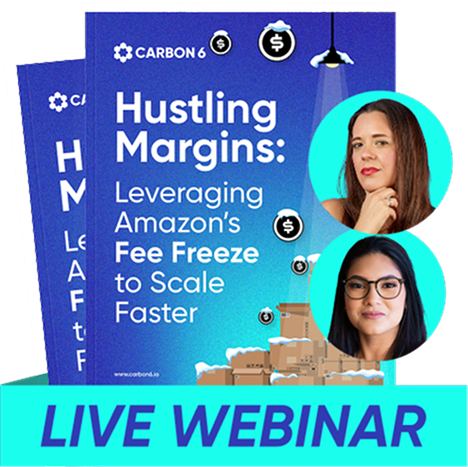Born in 2012, Amazon’s advertising business was a little slow to start. Six years of steady growth later, in 2018, its various advertising platforms were consolidated under one, centralized banner, rebranding simply as:
“Amazon Ads”
“From now on we are simply Amazon Advertising,” Amazon announced. “With this, we are retiring the names Amazon Media Group (AMG), Amazon Marketing Services (AMS), and Amazon Advertising Platform (AAP).”
Simplified product names reflected the new, unified brand.
- Headline Search Ads became Sponsored Brands.
- Amazon Advertising Platform became Amazon DSP.
- Amazon Marketing Services became the Advertising Console.
That change heralded the modern era of Amazon advertising, leading to a 10x of ad revenue in the first year alone (2018-2019).
Amazon ads grew up, seemingly overnight.
Progress has continued, making Amazon one of the dominant players in the advertising business period, with a fully evolved ads platform.
It starts with Ad Types.
Understanding the Two Types of Amazon Ads
Amazon Ad Types can be broken into two main categories:
- Amazon PPC
- Amazon DSP
PPC is the most common, and the most accessible.
DSP, or Demand Side Platform, has a higher cost of entry, greater complexity, more advanced offerings and, potentially, wider-reaching results.
Learn more about Amazon DSP in our in-depth article, here: Amazon DSP: A Seller’s Guide
PPC, or Pay Per Click, has three sub-types:
- Sponsored Products
- Sponsored Brands
- Sponsored Display
Sponsored Products
This is where you choose the product(s) to advertise, add relevant keywords you want to target, and set a Cost Per Click (CPC) amount.
Use this ad type to:
- Generate sales momentum for product launches
- Lock in higher ranking for specific keywords
- Build organic ranking
Organic ranking is your product’s likelihood of coming up in searches all on its own, with no ad spend.
The general formula is:
Sponsored Products = increased visibility = more impressions + more clicks + more conversions = higher ranking in the Amazon algorithms for search = better chance your product shows up in organic search results.
That’s a lot of pluses and equals, but you get the idea.
Sponsored Ads are money well spent to drive your organic ranking.
Sponsored Brands
Formerly called Headline Search Ads, these used to be available only to Vendor Central accounts, but are now available to anyone with Amazon Brand Registry.
The idea behind Sponsored Brands is to give you a way to create brand awareness. They appear as a banner ad on the top, the left, and below the search results page, with a headline, logo, and up to three featured products with links to their listings.
Some of the advantages of this type of ad:
- Create trust and authority for your brand
- The ability to add video ads
- Better control over ads
Sponsored Display
Launched in 2019 as part of that new wave of advertising options, Sponsored Display Ads target customers rather than keywords.
Based on audience interest and shopping behaviors, as well as if they’ve viewed your product’s detail page, this ad type takes note of what the customer is looking at and displays ads for those products, not only on Amazon, but across third-party apps and websites.
Think of it as Amazon DSP Lite, with an easier and faster process.
According to Amazon, “Sponsored Display is a self-service display advertising solution that helps you grow your business and brand on Amazon by engaging shoppers across the purchase journey, on and off Amazon.”
When it comes to types of Amazon ads, Sponsored Products is likely the one you’ll use most.
And when it comes to Sponsored Products, Placement is a key factor.
Amazon Ads Placement
Where your ad appears can mean as much to its success as all other factors combined.
For Sponsored Products you have some control over this. Placement allows you to set multipliers which increase your base bid, which in turn increases your visibility.
Note: Placement and performance results can be viewed for each ad by selecting the Placements tab for that campaign. There you’ll find a table with a range of KPIs, such as Impressions, CTR (Click Through Rate), ACoS (Advertising Cost of Sale), Sales and CPC (Cost Per Click).
There are three basic placement options; Top of Search, Product Page, and Rest of Search, each offering better or worse conversion rates.
Top Of Search
This placement option is top in all ways.
- Top of the search results
- Top in terms of cost
- Top conversion rates
Choosing this option will put your ad within the first two listings on the Amazon Search Results Page.
Top of Search Conversion Rate: Highest. Click Through Rate (CTR) can be as much as ten times higher than with Product Pages.
Product Page
As the name suggests these display within the product detail pages themselves, or in any non-search page location such as the add-to-cart page.
CTR drops off for this one, compared to Top of Search.
Product Page Conversion Rate: Typically greater than Rest of Search, but significantly less than Top of Search.
Rest Of Search
Similar to Top of Search, in that your ad is displayed within the search page results. Rest of Search puts your product ad lower on the results page, and even onto page 2 and further.
Most shoppers rarely scroll that far.
Rest of Search Conversion Rate: Lowest. While appearing on the search results pages, due to the way shoppers search these ads convert at a much lower rate.
Optimize For Profit
Now that we’ve covered the ads basics, how do you optimize for the best results?
When crafting your advertising campaigns, the goal is to optimize your ads for maximum conversions and sales.
Using the “adjust bids by placement” feature lets you set bid multipliers for Sponsored Products. In this way you can increase your bids by specified amounts to compete for specific placements.
As noted, to view ad performance by placement, use the Placements tab in any campaign. Information there will give you an idea of which ad to focus on.
Optimizing bids by placement means considering where you are on all three placements (Top of Search, Product Page, Rest of Search), and adjusting accordingly. To increase your Top of Search modifier, for example, while staying within your target ACoS, you may need to decrease the modifiers on the other two.
It may mean small sacrifices for bigger gains. As an example, in order to stay within your advertising budget you may need to decrease bids on all keywords, regardless of placement, to allow for a higher multiplier.
Which brings up an important note on the bread-and-butter of your Amazon advertising.
Keywords.
Keywords Are King
It starts with keywords. Everything evolves from there. Keywords are the foundation of your successful advertising, which means doing keyword research and finding the best-converting keywords for your products is, well, key.
With the right keywords, bid adjustments and ad types, you’ll zero-in your advertising, thus driving sales, thus driving awareness among your shopping audience, thus driving the strength of your brand and your organic presence.
Could your product(s) become a household name?
It’s certainly possible. Full awareness of Amazon advertising and how to optimize it could empower you to elevate your product(s) to that exalted level of brand recognition.
Even if not, mastering these advertising basics will definitely drive your profit in ways guaranteed to make you smile.
Take Your Amazon Ads to the Next Level
After a decade of existence, Amazon ads have come fully into their own. They’re now a major, and necessary, part of any Amazon enterprise – just as advertising is part of any successful retail operation anywhere.
Carbon6 recognizes this reality.
With a suite of tools and services designed specifically for you, the Amazon seller, Carbon6 stands ready to help you manage your advertising. Our PixelMe off-Amazon solution helps you boost your rank with data-backed keyword recommendations and optimization. PPC Entourage, our flagship product for Amazon ads, helps you minimize wasted ad spend and efficiently optimize ads at scale. In addition we’re launching a profitability audit soon, including a module on advertising audits.
When it comes to winning with your Amazon advertising, we’ve got you covered.
Ultimately, whether you decide to use tools or other services to make the ads machine move faster and better, knowing these fundamentals positions you to maximize results.
Your expansion is sure to follow.





